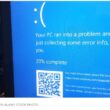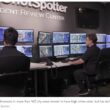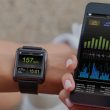Don’t be fooled
The masking effect of cable loss may cause your antenna to appear to perform more efficiently than is actually the case. In fact, it is possible to measure apparently acceptable voltage standing wave ratios (VSWR) or return loss (RL) levels even though your antenna may be completely out of operation. The purpose of this article is to provide an understanding of the cable-loss masking effect and explain how to avoid this pitfall.
Figure 1 and Examples 1 and 2 illustrate the masking effects of cable loss. As you can see, 3 dB of cable loss will produce measurements with a significant error offset. Given that a typical antenna is designed to operate at 1.5 VSWR (-14.0 dB return loss) or better, this could make the difference between judging your antenna as in or out of specification. Furthermore, 7 dB of cable loss could render the measurement meaningless. This worst-case scenario may allow an antenna failure to go undetected.
The masking effect of cable loss causes an error offset when measuring antenna VSWR or return loss match levels. This error offset may be corrected using Equation 1.
VSWR match levels may be corrected by converting to/from equivalent return loss match levels. A match-offset feature on your test equipment will automate this calculation. Simply enter the cable loss value as the match offset and the corrected VSWR or return loss match level will display.
Cable loss is the total insertion loss of your transmission cable system. This typically will include insertion loss of the transmission cable, jumper cables, connectors and lightning protection. Note that loss of other components (e.g., VSWR/power monitor, duplexer, combiner or filter) also may come into play.
As an example, the transmission cable system for an 800 MHz antenna mounted at the 200-foot (61-meter) level of a tower may include the following:
- Transmission cable: ⅞-inch Andrew LDF5-50A, 1.13 dB/100 feet (3.69 dB/100 meters) at 824 MHz
- Jumper cable: ½-inch Andrew FSJ4-50B, 3.23 dB/100 feet (10.6 dB/100 meters) at 824 MHz
Based on those cable specifications, the losses would be calculated at:
- 230 feet of transmission cable = 2.60 dB loss
- 20 feet jumper cable at transmitter = 0.65 dB loss
- 10 feet jumper cable at antenna = 0.32 dB loss
- Connection pairs × 4 = 0.1 × 4 = 0.4 dB loss
- Lightning protection = 0.1 dB loss
As a result, the cable loss (total insertion loss) would be 4.07 dB. In this case, a 1.17 VSWR (-22.1 dB RL) measured at the transmitter end of the cable would indicate that the antenna measurement is actually 1.50 VSWR (-14.0 dB RL). This would be acceptable as a typical antenna is designed to operate at 1.50 VSWR (-14.0 dB RL) or better.
Similarly, a 1.50 VSWR (-14.0 dB RL) measured at the transmitter would equate to a 3.09 VSWR (-5.8 dB RL) at the antenna. This would signify that the antenna is not performing to the 1.50 VSWR (-14.0 dB RL) specification.
Finally, a 2.29 VSWR (-8.1 dB RL) at the transmitter yields an antenna with a 100+ VSWR (0.0 dB RL). This measurement should alert the user that the antenna has failed and requires immediate attention.
Cable loss can be measured with the same equipment used to measure your antenna VSWR or return loss levels. A vector network analyzer (VNA) with a cable loss mode simplifies this measurement. Simply connect one end of your cable to the VNA, place an open or short at the far end of the cable, and perform the cable-loss test.
A VNA with a distance-to-fault (DTF) or fault location mode will automatically correct for cable loss. The cable loss per meter or per foot is entered during the setup of the DTF measurement. Once setup is complete, connect one end of your cable to the VNA with the antenna connected at the far end of the cable and perform the DTF test. The result is an antenna-VSWR or return-loss measurement corrected for cable loss.
A power meter also may be used to calculate cable loss. Measure the power levels at the input and output of your cable, convert to units of dBm, and calculate the difference. For example, input power of 100 W (50 dBm) and output of 50 W (47 dBm) yields a cable loss of 3 dB (50 dBm – 47 dBm). Cable loss also may be estimated, as noted earlier. Sum the insertion loss parameters for each component of your transmission cable system at your operating frequency. Note that insertion loss increases as frequency increases.
Cable loss causes a masking effect when measuring antenna-VSWR and return-loss levels. Cable loss can be measured with the same vector network analyzer or power meter used for your antenna measurements. A match-offset feature on your test equipment will correct VSWR and return loss match levels. Correcting for this error offset is essential to determine your antenna’s actual performance level.
Jim Norton is an applications engineer at Bird Electronic Corp. He has 20 years of experience in the land mobile radio and cellular telephone industries, serving in both applications and systems engineering roles.
Where RL represents return loss and CL represents cable loss.
Cable loss: 3 dB
EQUATION 1
RL at antenna = RL at transmitter – (2 × CL)
VSWR measured at transmitter: 1.5 VSWR (-14 dB return loss)
EXAMPLE 1
CABLE LOSS OF 3dB
Antenna VSWR (actual): 2.33 VSWR (-8 dB return loss)
VSWR measurement error 0.83 VSWR (6 dB return loss)
Forward power measured at transmitter: 100 W
Forward power at the antenna (actual): 50.1 W
Forward power measurement error: 99.6% W
Reflected power measured at transmitter: 4 W
Reflected power at antenna (actual): 8 W
Reflected power measurement error: -50% W
Cable loss: 7 dB
VSWR measured at transmitter: 1.5 VSWR (-14 dB return loss)
EXAMPLE 2
CABLE LOSS OF 7dB
Antenna VSWR (actual): 100+ VSWR (0 dB return loss)
VSWR measurement error: 98.5+ VSWR (14 dB return loss)
Forward power measured at transmitter: 100 W
Forward power at the antenna (actual): 20 W
Forward power measurement error: 400% W
Reflected power measured at transmitter: 4 W
Reflected power at antenna (actual):20 W
Reflected power measurement error: -80% W
Cable loss has a masking effect on antenna VSWR and return loss measurements. The end result is an error offset that must be corrected. The following exercise walks you through this process with a step-by-step procedure.
A 100 W transmitter is connected to a cable and antenna. Cable insertion loss is known to be 3 dB. Measurements taken at the transmitter end of the cable indicate a VSWR of 1.5 (–14 dB return loss). What is the actual antenna VSWR or return loss?
STEP-BY-STEP PROCEDURE
Step 1: Forward power at antenna
1a) List known values.
Forward power at transmitter = 100 W
Cable loss = 3 dB
1b) Calculate forward power.
Forward power at transmitter
= 100 W
Convert W to dBm
= 10 x Log 100 W + 30
= 50 dBm
Forward power at antenna
= Forward power at transmitter – cable loss
= 50 dBm – 3 dBm
= 47.0 dBm
Convert dBm to W
= 10 (47.0 dBm – 30) / 10
= 50.1 W
Step 2: Reflected power at antenna
2a) List known values.
Measurement at transmitter
= 1.5 VSWR
= –14 dB return loss
Forward power at transmitter
= 100 W
= 50 dBm
Cable loss = 3.0 dB
2b) Calculate reflected power.
Reflected power at transmitter
= Forward power x 10 (Return loss / 10)
= 100 W x 10 (–14 dB / 10) = 4 W
Convert W to dBm
= 10 x Log 4 W + 30
= 36.0 dBm
Reflected power at antenna
= Reflected power at transmitter + cable loss
= 36 dBm + 3 dB
= 39 dBm
Convert dBm to W
= 10 (39 dBm – 30) / 10
= 8 W
Step 3: VSWR and RL at antenna
3a) List known values.
Forward power at antenna
= 50.1 W
= 47 dBm
Reflected power at antenna
= 8 W
= 39 dBm
3b) Calculate VSWR and RL at antenna.
Rho at antenna
= √ (reflected / forward power)
= √ (8 W / 50.1 W)
= 0.4
VSWR at antenna
= (1 + Rho) / (1 – Rho)
= (1 + 0.4) / (1 – 0.4)
= 2.33
Return loss at antenna
= 10 Log (reflected / forward power)
= 10 Log (8 W / 50.1 W)
= –8.0 dB
A few trends are worthy of note:
As cable loss increases, the error offsets increase as well. As VSWR or return loss levels increase, the error offsets also increase. Error offsets are independent of power levels. As an example, 3 mW, 50 W and 1 kW applications are equally affected by the masking effect of cable loss.

















